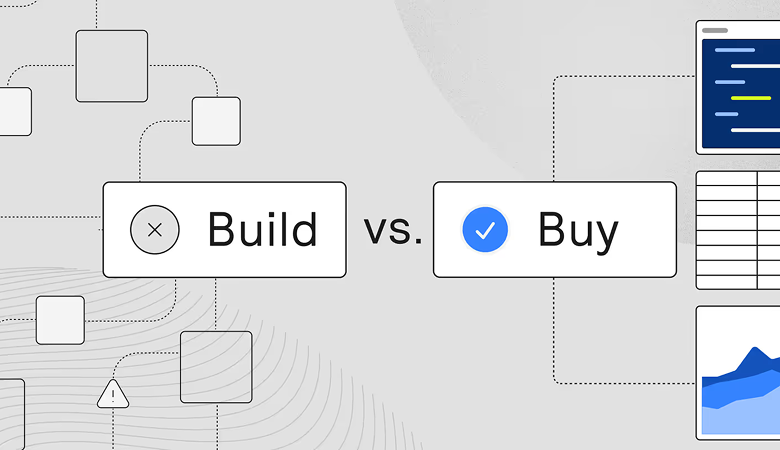Whether you’re looking to start your SaaS billing journey on the right foot, or you feel like your current solution is beginning to fall short, the message is clear: You need SaaS billing software that fits your business needs as ideally as possible.
In this blog post, we’ll share an overview of the most-watched SaaS billing solutions in the market and help you find one that meets your specific business requirements.
You’ll learn:
- The reason why companies use SaaS billing software
- The benefits of using these platforms
- The pros and cons of eight major players in the SaaS billing software space
- How to choose the right SaaS billing system for your needs.
Let’s begin by explaining why specialized SaaS billing solutions should be on your radar.
Why choose a SaaS-specific billing software?
A SaaS billing system is essential because it’s built to handle the complexities of recurring revenue, subscription tiers, and usage-based billing that generic platforms can’t manage efficiently.
SaaS billing platforms automate invoicing, ensure accurate tracking, and adapt to customer changes like upgrades or trials. By using SaaS billing software, you also gain access to key metrics like MRR and churn rate, which are crucial for driving informed decisions and optimizing growth.
The benefits of automation and integration
Here are the key benefits of using automated and integrated billing systems:
- Error reduction: Automating billing tasks minimizes human error and helps prevent costly mistakes like incorrect pricing or miscalculated upgrades.
- Accurate financial reporting: Automated calculations and subscription adjustments ensure accurate tracking and reporting.
- Better financial management: Seamless integration with accounting software creates a unified system. These integrations help simplify revenue recognition based on customer location and product SKU or tier usage.
- Real-time insights: Integration provides your accounting team with up-to-date, accurate financial data. You're reducing manual reconciliation and offering a real-time view of your company's financials.
Following is an overview of the pros and cons of the SaaS billing solutions we'll cover:
SaaS billing software options that you should know in 2025
#1 Orb
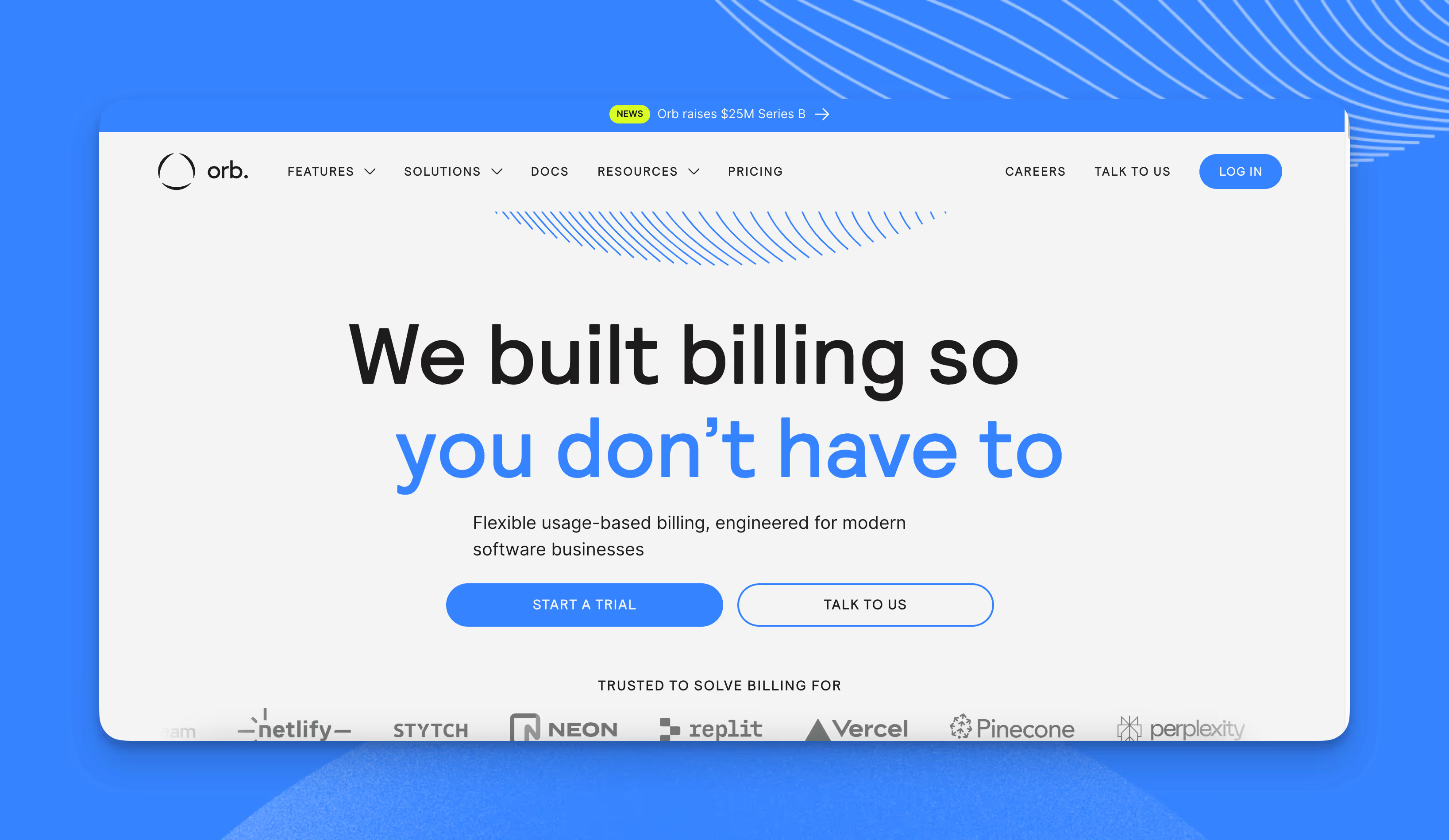
Orb is a user-friendly billing management platform that specializes in usage-based models. It emphasizes detailed invoicing and seamless data integration.
Its core strength lies in making complex billing scenarios transparent and manageable. Orb excels in handling high volumes of billing events. That's why it's ideal for usage-based pricing where large datasets are standard.
These are some of its most robust features:
- Handles large-scale event ingestion for usage-based billing
- Detailed invoicing with usage graphs, timelines, and individual pricing data for unparalleled transparency
- Direct integrations with data warehouses (like Snowflake) and finance tools (like QuickBooks), simplifying data flow and analysis
- Advanced plan versioning for seamless pricing changes without complex migrations
- SQL editor for advanced customization and data reporting, enabling granular control for specialized financial analysis
What makes it a great SaaS billing software
Orb's standout feature is its raw event ingestion architecture. This system allows businesses to capture and process large volumes of raw data in real-time, making sure that every usage event is tracked precisely.
By leveraging this architecture, Orb provides unparalleled transparency and accuracy in billing, particularly for usage-based SaaS models. Companies can bill their customers based on actual usage, with data-driven insights powering granular invoicing too.
Pricing
On request.
#2 Stripe
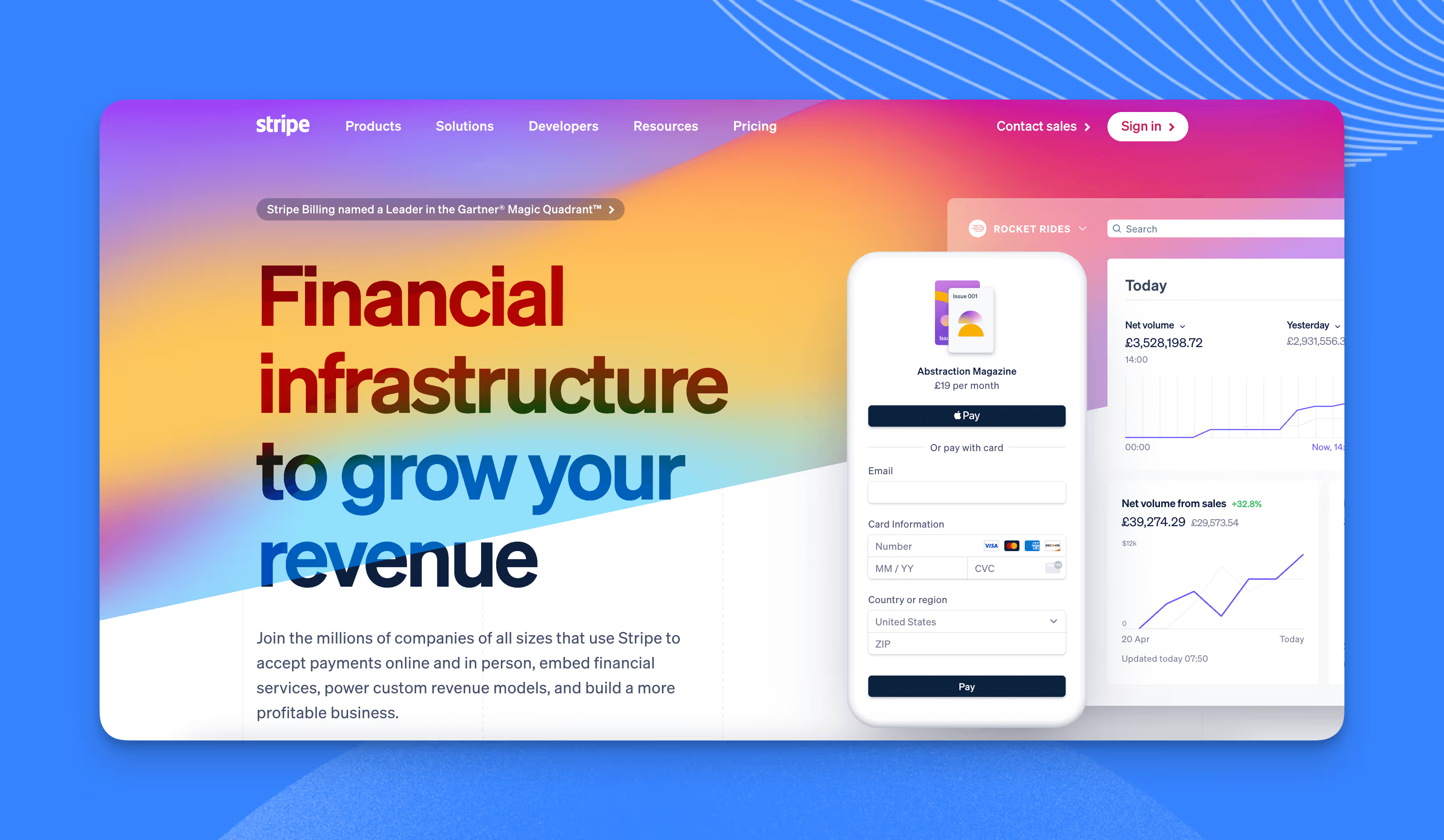
Stripe is a comprehensive payment processing platform. It offers powerful tools for subscription management and a developer-first focus.
Known for its robust APIs, global reach, and focus on customization, Stripe is ideal for teams that need complete control over their payment and billing stack. Its strength lies in streamlined billing operations and automation tools for managing tax rules across various jurisdictions.
Stripe’s developer focus is not the most intuitive solution for non-technical teams — especially those on the finance side. Companies prioritizing ease of setup or those with less complex billing models will notice that solutions like Orb require less development overhead.
These are some of its best features:
- Flexible APIs and extensive developer support for deep customization
- Global payment gateway coverage, handling multiple currencies and payment methods, simplifying international sales
- Sales tax automation and compliance features for accurate calculations across different regions
- Unified billing and payment processing, streamlining the end-to-end process
- Robust SDKs, documentation, and customer support offering reliable resources
What makes it a great SaaS billing software
Stripe's international payment capabilities and its ability to automatically handle sales tax calculations across different regions make it a strong contender for companies selling SaaS globally.
Additionally, their customization options give businesses flexibility in building unique billing flows.
Pricing
Stripe’s billing capabilities offer two pricing options:
- Pay as you go: This option has no recurring fees and is best for businesses with low or unpredictable volumes. The rate is 0.7% of Billing volume (excluding one-off invoices).
- Pay monthly: This option starts at $620 per month for up to $100,000 in Billing volume, with 0.67% for additional volume. Higher pricing tiers are available for larger volumes, and custom pricing is offered for businesses processing over $1,000,000 per month.
#3 Chargebee
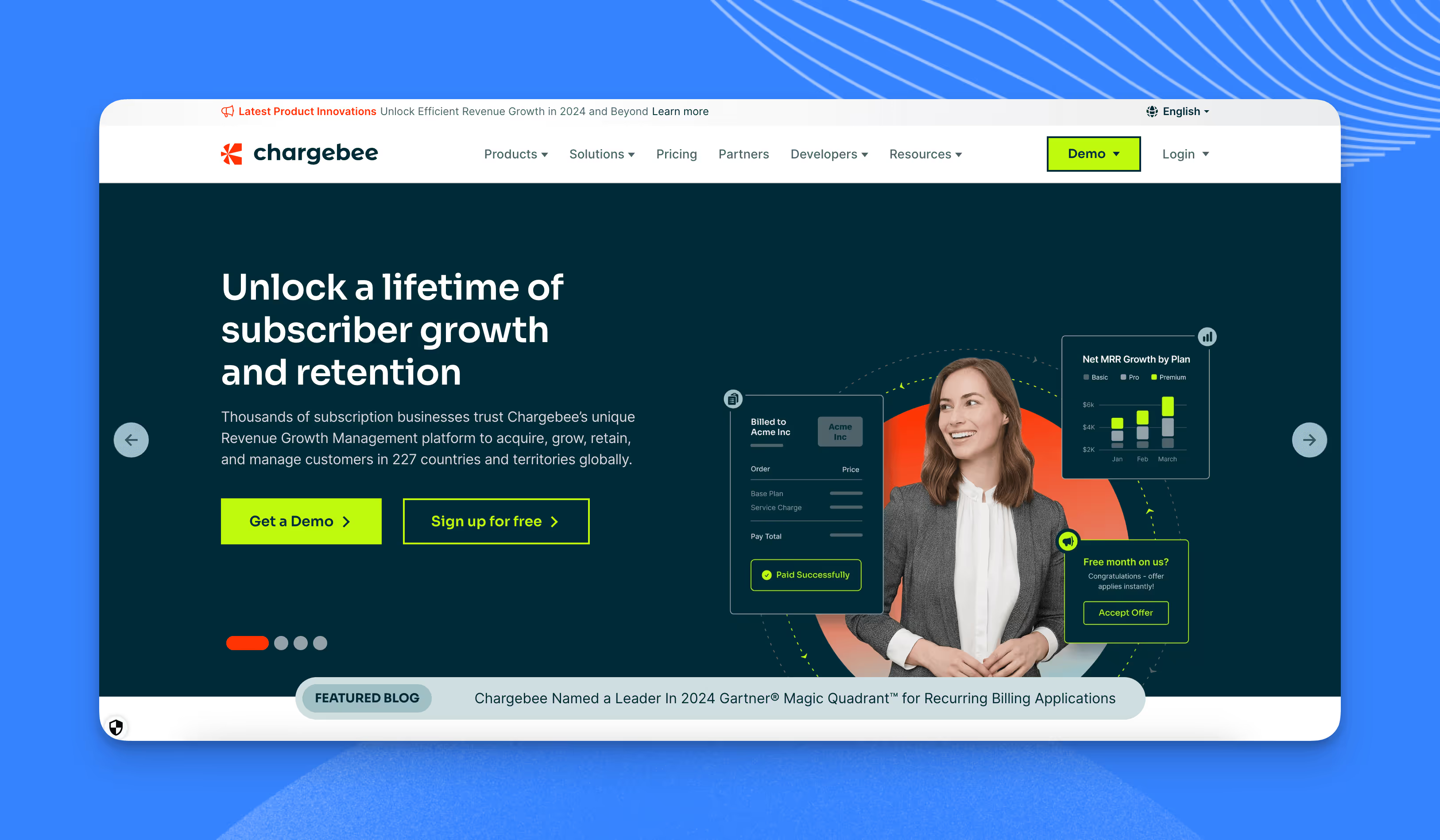
Chargebee is a full-fledged subscription management platform designed for ease of use. It prioritizes quick setup, transparent pricing, and effective churn reduction tools.
It offers a billing solution with core subscription and payment recovery features. However, compared to other platforms, it may lack some highly customizable features.
These are some of its best features:
- User-friendly interface, minimizing setup time, making it ideal for non-technical users
- Effective dunning management to help reduce churn
- Integrations with popular CRM, accounting, and helpdesk tools, streamlining overall workflows
- Detailed subscription management features (upgrades, downgrades, trials, etc.) covering the core customer lifecycle
What makes it a great SaaS billing software
Chargebee simplifies the setup process. It offers tools for managing core aspects of the client’s subscription lifecycle.
Chargebee is a solid option for companies that want to get their SaaS billing system running smoothly in minimal time. This billing platform can be particularly useful for companies facing high customer churn rates.
Pricing
Starter plan: $0 / per month. Chargebee’s pricing is structured as a pay-as-you-go model with no annual commitment. Once the business’s cumulative billing exceeds $250k, an overage fee of 0.75% is charged every month for all billing beyond that.
Performance plan: $599 / per month. This pricing tier is an annual commitment with discounts available if paid upfront. The same overage fee of 0.75% is charged monthly for all billing that surpasses a $100K monthly limit.
Enterprise plan: A custom quote is required.
#4 Maxio
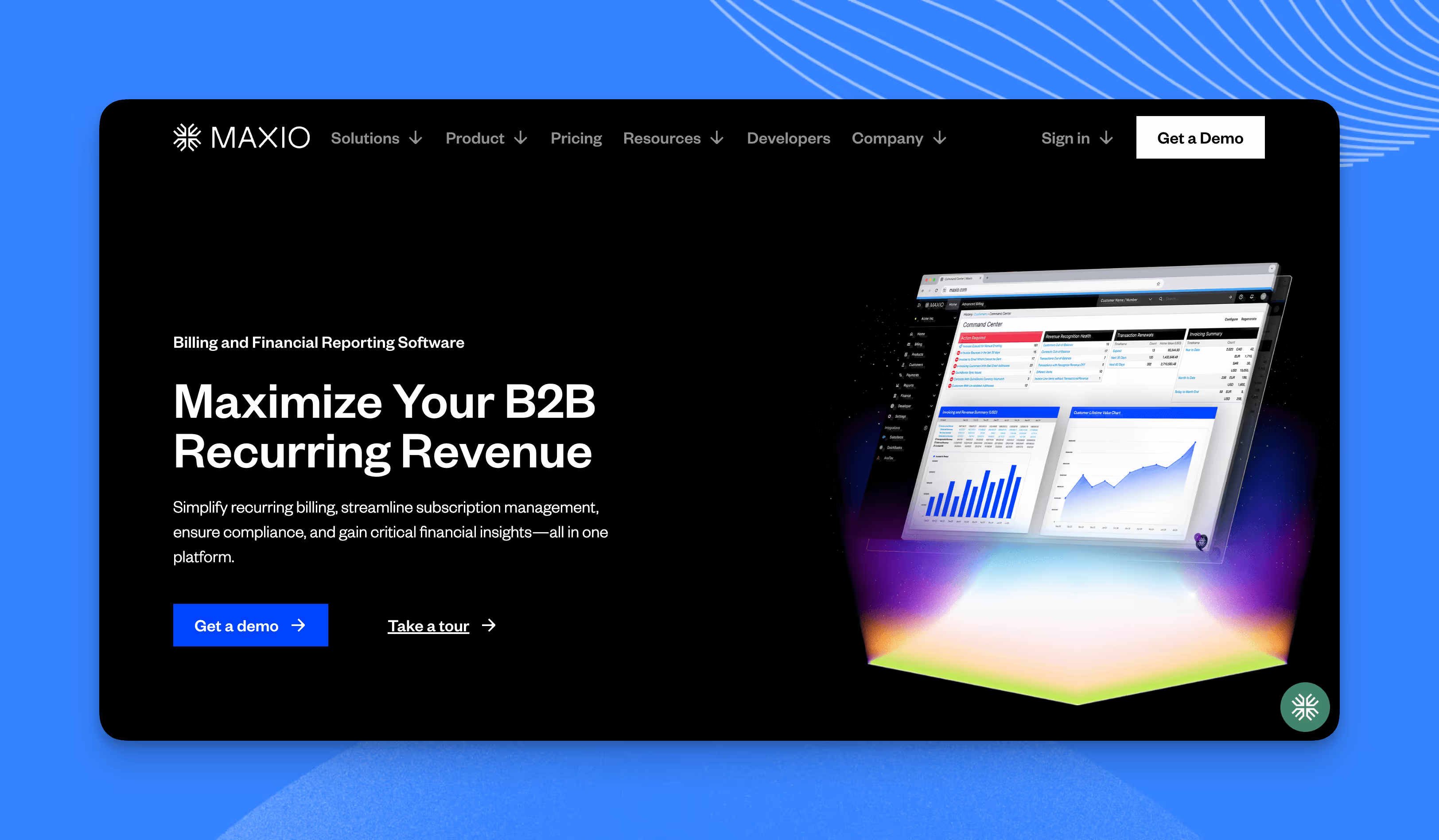
Maxio is a powerful billing and financial platform built specifically for B2B SaaS. It's especially designed to scale with rapidly growing companies.
Its strength lies in adaptable billing workflows, GAAP compliance, and the ability to handle complex subscription models and enterprise reporting needs. Maxio offers in-depth customization for invoicing and financial reporting.
Maxio's often convoluted customization can lead to a steeper learning curve compared to others. Businesses lacking teams with uber-technical knowledge might find the setup process more complicated.
These are some of its strongest features:
- Customizable billing workflows to handle even the most intricate pricing models
- Robust revenue recognition features for GAAP compliance
- Detailed reporting and analytics dashboards for strategic insights
- Ability to automate complex revenue recognition scenarios, simplifying financial processes
What makes it a great SaaS billing software
Maxio stands out for its ability to adapt to intricate billing models. It's also a good choice because it can handle revenue recognition in GAAP-compliant ways.
These strengths are vital for scaling B2B SaaS companies. Those having trouble with their financial reporting accuracy may appreciate Maxio’s offering.
Pricing
Maxio employs a flexible pricing model determined by your billing volume over a year. You have the option to customize your solution by adding or removing modules.
Base plan: Starting at $5k a year (up to $500k in annual billings)
Custom plan: On request.
#5 Zuora
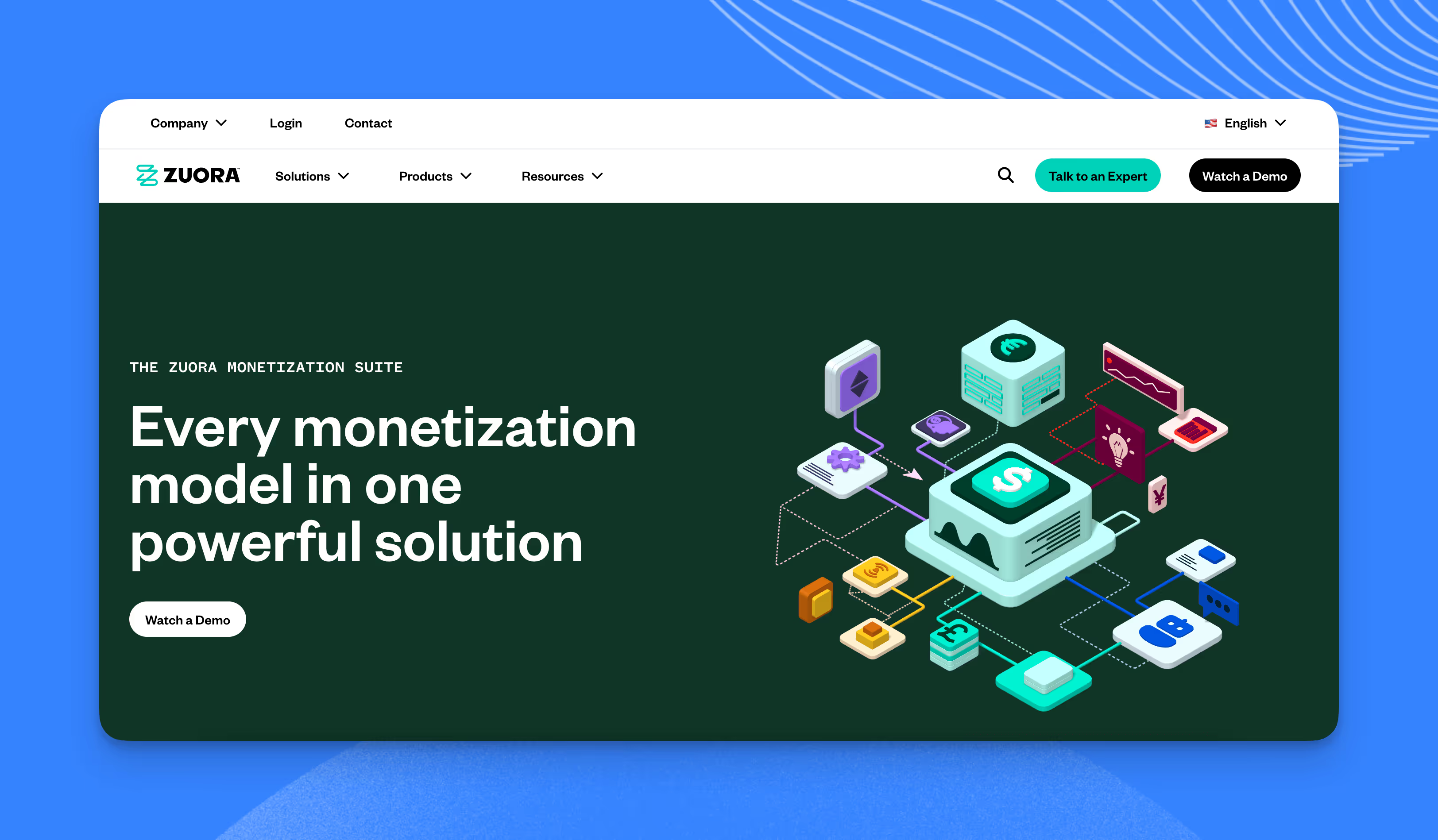
Zuora is a subscription billing platform tailored towards large, established enterprises. It prioritizes advanced financial compliance. It also handles highly intricate pricing models and integrations with other enterprise-level software.
Its less intuitive interface trades off against its extensive feature set and level of customization. Zuora emphasizes robust customer communication tools and granular configuration for specialized use cases.
These are some of its best features:
- Handles intricate subscription models, complex scenarios, and multi-tiered pricing structures
- API integrations with other enterprise software
- Emphasis on advanced accounting compliance and revenue recognition
- Extensive configuration options at the subscription, product, and customer level
What makes it a great SaaS billing software
Zuora's ability to support highly complex subscription structures and its emphasis on customization makes it a good fit for enterprise-level SaaS businesses with niche pricing models or specialized compliance needs.
Pricing
On request.
#6 Recurly

Recurly is a subscription billing platform with a developer-friendly approach and a laser focus on customer retention.
It’s good for providing data-driven insights into subscriber behavior. Recurly offers powerful tools to understand and reduce churn, ultimately optimizing revenue. Recurly's focus on dunning and proactive churn prevention makes it stand out.
Recurly’s feature set isn’t as good for businesses with highly intricate billing models or those needing advanced customization outside of churn prevention. Companies with complex pricing structures might find platforms like Orb or Maxio offer them better features.
These are some of its strongest features:
- Advanced analytics and revenue insights, enabling optimization
- Highly effective dunning system to minimize involuntary churn with automatic retry logic and customizable communication
- Robust payment orchestration supporting multiple gateways extending global reach
- Dedicated focus on subscription billing
- Noteworthy customer support and detailed insights into subscriber activities, prioritizing responsiveness
What makes it a great SaaS billing software
Recurly provides insightful analytics for churn reduction and powerful tools to automate payment retries. It's ideal for SaaS companies aiming to optimize revenue through proactive customer retention.
Pricing
Starter plan: $249/month ($0 for the first 12 months and new customer only)
Professional plan: On request.
Elite plan: On request.
#7 Paddle
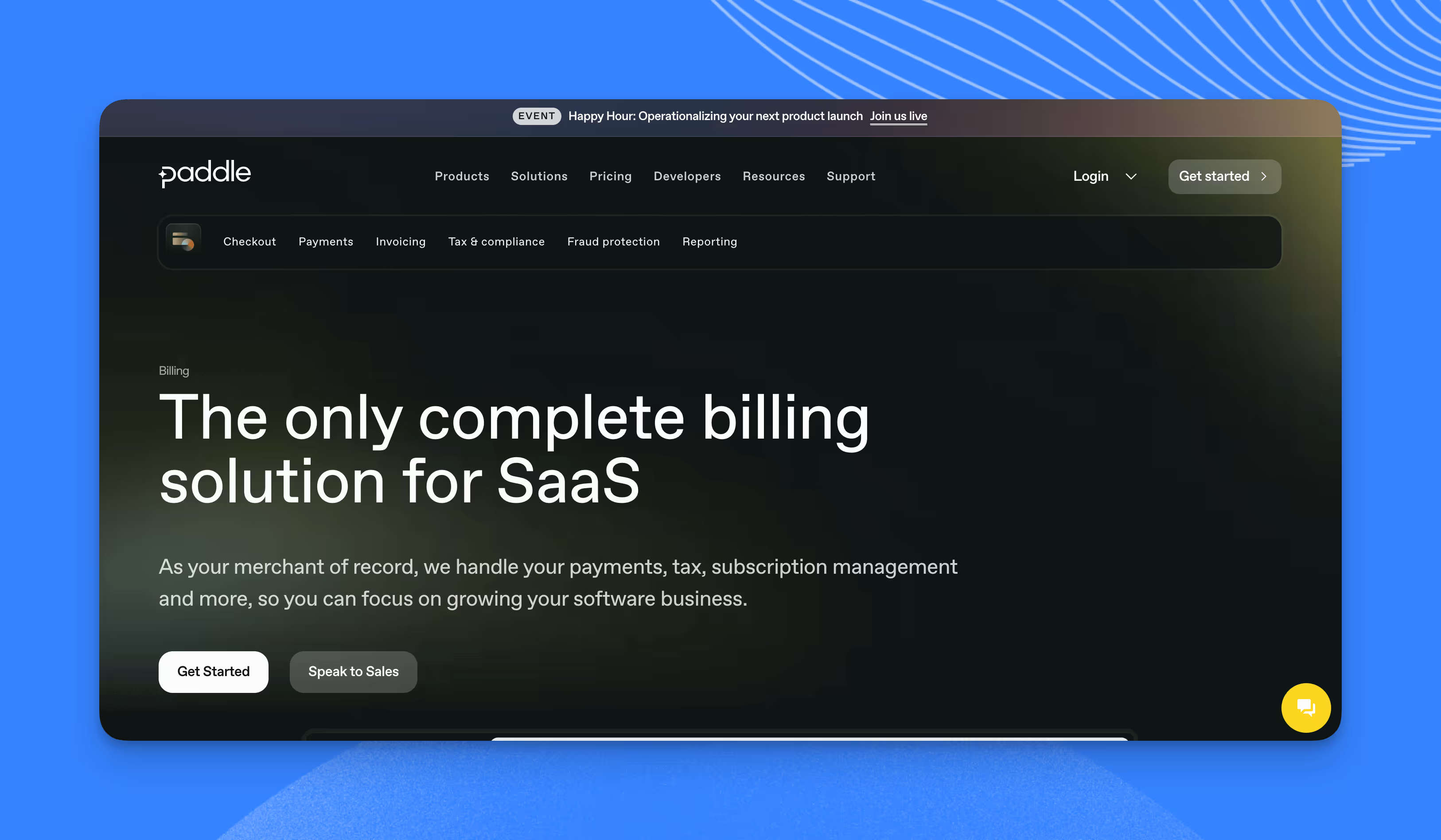
Paddle is a billing and revenue management platform tailored specifically for SaaS companies. Paddle helps SaaS companies expand internationally without the administrative burden of handling different tax regulations or payment methods.
These are some of its best features:
- Simplified subscription management with built-in dunning and retention tools
- Multi-currency support and localized checkouts for global sales
- Flexible subscription management, including invoicing, upgrades, downgrades, and pauses
- Seamless integration with other tools, including Paddle.js for quick setup
What makes it a great SaaS billing software
Paddle’s ability to manage global tax compliance and handle all billing scenarios as a merchant of record makes it an attractive option for SaaS businesses looking to scale internationally with ease.
Pricing
Paddle charges 5% + 50¢ per transaction, covering all aspects of billing and compliance. They also offer a tailored pricing option once you request a quote.
#8 Ordway

Ordway is a newer, growing SaaS billing system. It's known for its ability to handle complex billing workflows and subscription management.
Despite being a newer player, Ordway has established a strong reputation. Particularly, it's gaining traction among companies with highly customized subscription and usage-based models.
These are some of its key features:
- Handles complex billing workflows and contract modifications with ease
- Advanced subscription management, including upsells, downsells, and custom renewals
- Robust API for seamless integration and automation, allowing easy scalability
- Built-in revenue recognition features to ensure financial accuracy
- Extensive reporting and analytics to track and optimize MRR and other key metrics
What makes it a great SaaS billing software
Ordway’s ability to handle complex workflows, alongside its easy-to-navigate API and powerful contract management features, makes it a solid choice for fast-scaling SaaS companies with unique billing needs.
Pricing
On request.
How to choose the best billing software for your SaaS
To save you time, here's a quick comparison chart that highlights key features across top SaaS billing platforms. Use it to identify the strengths and limitations of each solution based on your specific needs:
Legend:
- ✅ — Good fit
- 🟡 — Possible fit
- ❌ — Not a good fit
With this chart in mind, you should now weigh which of these SaaS billing platforms best fits your business needs. Here's a breakdown of the critical factors to consider:
Your billing model and types of customers
Think closely about how you currently charge your customers and how those needs might change in the future. Here's how popular billing software options usually align with different models:
- Usage-based billing: Transparent invoicing for usage-based pricing is central to your model. A platform like Orb excels in this area.
- Complex subscriptions: For advanced subscriptions with intricate rules or niche needs, Ordway, Orb, and Maxio offer robust support. However, Ordway doesn’t scale as well or provide as detailed usage breakdowns as Orb.
- Hybrid models: Many platforms can support combined pricing approaches, but Orb's adaptability makes it stand out for those evolving from simple subscriptions towards more complex usage-based elements.
- Simpler subscription models: For companies that need straightforward recurring billing and global tax compliance, Paddle simplifies the process with its merchant of record services.
You should also consider your customer base:
B2C: Ease of use should be a priority, both on your end and the customer's. Chargebee and Paddle are known for their user-friendly interfaces.
B2B: You will need sophisticated reporting capabilities and features to handle complex contracts. Maxio and Orb are designed with B2B needs in mind. Ordway may be strong, but it struggles with higher transaction volumes at scale because it’s relatively new in the industry.
Your integration needs
Your billing software should fit into your existing workflow like a glove. Consider the essential tools you use and look for billing platforms that offer native integrations with:
- Accounting software (e.g., QuickBooks, Xero): Integration with these tools makes financial tracking, tax calculations, and accurate reporting far easier.
- CRM (e.g., Salesforce, HubSpot): Helps you ensure customer data flows smoothly between sales and billing, eliminating errors caused by manual data entry.
- Helpdesk (e.g., Zendesk): Helps you address billing-related customer inquiries along with other support issues, improving overall customer experience.
Potential for scalability
Choose a billing solution that can grow alongside your SaaS business. Consider these critical factors:
- Transaction volumes: The platform should handle a significant increase in invoices and transaction volume without performance issues.
- New pricing models: Look for the ability to easily add new tiers and features or change and migrate pricing as your business needs change.
- International expansion: For global ambitions, choose platforms that support multiple currencies, tax rules, and other requirements for international sales.
Next steps
Now that you’ve got an overview of the best SaaS billing software available today, you're ready to choose a billing platform that fits your business objectives and helps you deliver better customer satisfaction overall.
For a fully done-for-you usage-based billing solution, consider using Orb.
Product leaders at industry-leading companies like Perplexity and Vercel turn to Orb to build a pricing engine that supports their growth ambitions and aligns with market expectations.
Test-drive our platform by starting a free 30-day trial. Discover the convenience Orb brings, taking the burden of complex billing off your shoulders.

%20(1).avif)

